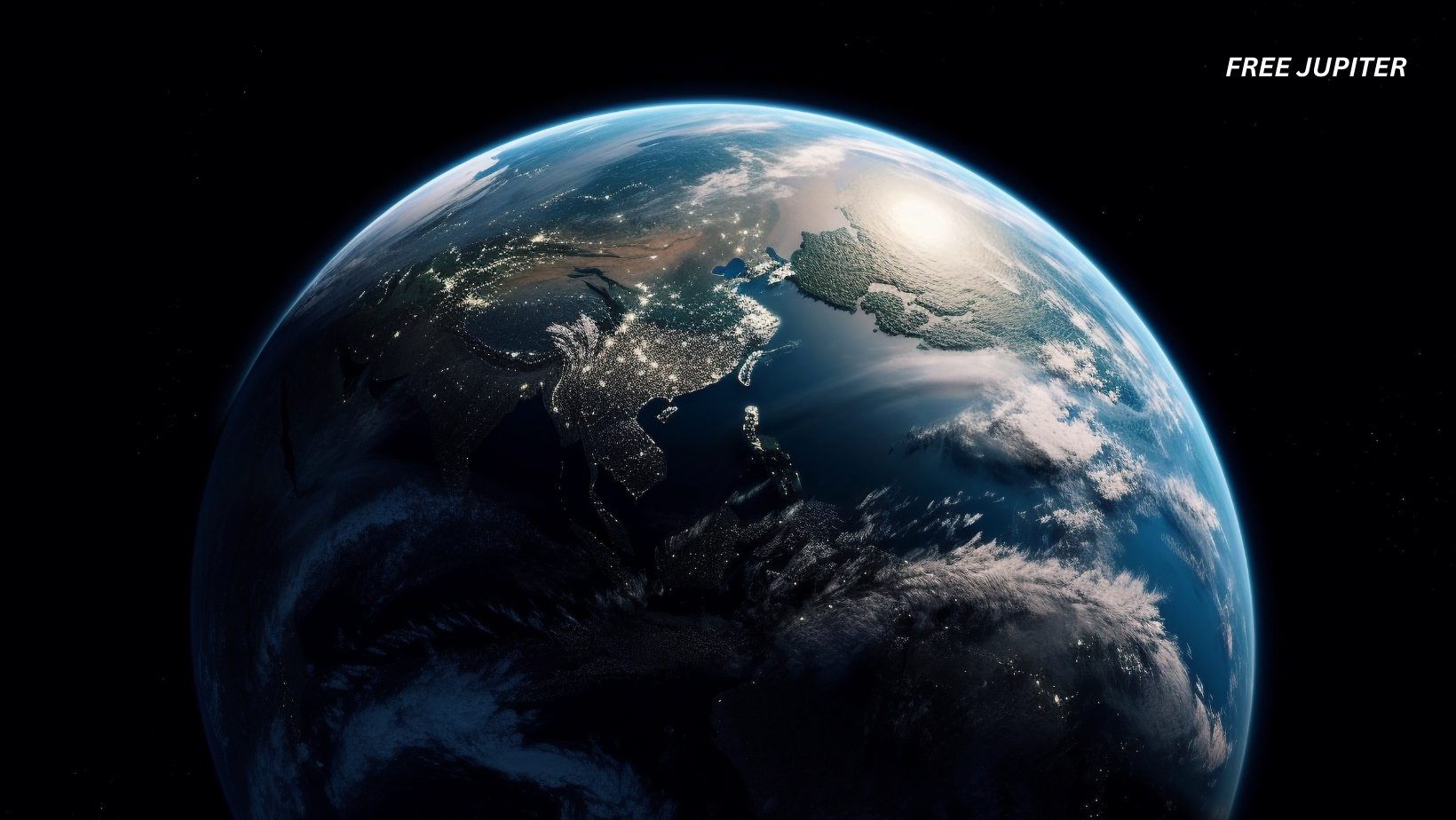For decades, astronomers thought they had Earth’s immediate cosmic neighborhood pretty well mapped out. After all, how could a new “moon” go unnoticed when we’ve been pointing telescopes skyward for centuries? And yet, it turns out our planet has been sharing its orbit with a quiet companion for over 60 years—a small space rock called 2025 PN7 that only revealed itself in 2025.
This surprise discovery is more than just trivia. It’s a reminder that space is still full of mysteries hiding in plain sight, even right next door.
What Exactly Is 2025 PN7?
Discovered by the Pan-STARRS observatory in Hawaii, PN7 is about 62 feet wide—roughly the length of a bowling lane or half a blue whale. While that’s tiny by astronomical standards, it’s still big enough to be noticed… eventually.
But here’s the catch: PN7 isn’t technically a moon. Instead, it belongs to a rare class of objects called quasi-moons (or quasi-satellites).
- A regular moon: Orbits Earth directly (like our familiar Moon).
- A quasi-moon: Orbits the Sun, but does so on a path so similar to Earth’s that it looks like it’s tagging along with us.
So PN7 is not gravitationally locked to Earth—it’s just moving in rhythm with us around the Sun, the way two marathon runners might end up running side by side without ever planning to.
Read more: Rogue Planets Floating in Deep Space May Be Forming Their Own Moons
Our Quiet Neighbor
Despite its dramatic entrance, PN7 is a cautious neighbor. The rock never comes closer than about 2.8 million miles (roughly 12 times farther than the Moon). On the flip side, it doesn’t wander farther than 37 million miles.
Astronomers think PN7 has been following this parallel path for about 60 years and will likely stick with us for another 60 before eventually peeling off to orbit the Sun solo. If Earth were a marathon runner, PN7 would be that jogger who always happens to keep pace just a few lanes away—never too close, never too far.
A Short List of Quasi-Moons
PN7 isn’t the first Earth quasi-moon to be discovered, but these objects are rare. Only about seven are currently known.
One of the most famous is Kamoʻoalewa, found in 2016. It’s larger than PN7 (around 160 feet across) and has such an unusual, elongated shape that scientists think it may even be a fragment of our Moon that was knocked loose by an ancient asteroid impact.
Kamoʻoalewa has become intriguing enough to warrant an entire space mission: China’s Tianwen-2, set to launch later this decade, aims to bring back samples for study. If successful, it would be the first mission to return material from a quasi-moon.
Why Haven’t We Seen PN7 Before?
If PN7 has been around since the 1960s, why are we only just noticing it now?
The simple answer: it’s hard to spot small, faint objects in space.
Unlike the Moon, which is bright, predictable, and obvious, quasi-moons move in more complex, looping patterns. They’re also much dimmer and get lost against the bright backdrop of stars, planets, and satellites. Even advanced telescopes can miss them unless they’re specifically searching for small, near-Earth objects.
Only in recent years, with surveys like Pan-STARRS and the upcoming Vera C. Rubin Observatory in Chile, have astronomers been able to catch these elusive companions.
Why Quasi-Moons Matter
At first glance, PN7 might just seem like another harmless rock. But quasi-moons are more than curiosities. They play an important role in both planetary science and space exploration.
- Planetary Defense
Every new near-Earth object we identify adds to our catalog of potential threats. While PN7 is no danger, tracking these objects sharpens our ability to detect and predict future hazards—like the asteroids scientists worry could someday cross Earth’s path. - Solar System Clues
Quasi-moons may be remnants of ancient collisions or gravitational oddities left over from the early solar system. Studying them could reveal how Earth and its neighbors formed. - Practice Targets for Exploration
Some quasi-moons come close enough that reaching them with spacecraft could be easier than reaching Mars—or even the Moon. This makes them excellent test beds for new technologies, such as asteroid mining or long-term robotic exploration.
Quasi-Moons vs. Trojan Asteroids
You may have heard of Trojan asteroids, which are another type of Sun-orbiting object that shares a planet’s path. For example, Jupiter has thousands of Trojan asteroids locked in stable positions, orbiting ahead of and behind it.
Quasi-moons are different. Instead of staying in fixed points along Earth’s orbit, they weave in and out of Earth’s vicinity in more complex loops. They’re less predictable, more temporary, and much harder to spot.
Could Quasi-Moons Ever Become Real Moons?
An interesting question is whether a quasi-moon like PN7 could someday get captured by Earth’s gravity and become a “true” second moon.
In theory, yes—if the right gravitational nudge occurred, such as a close pass with another asteroid. But in practice, the odds are slim. Quasi-moons usually drift away after a few decades or centuries, never staying long enough to get locked in.
That said, Earth has temporarily captured small asteroids before. In 2006, astronomers discovered a tiny object called 2006 RH120 that orbited Earth for about a year before slipping away. It was essentially a “mini-moon”—a reminder that our planet occasionally borrows celestial company.
Read more: Astronomers Suggest That Earth Is Sitting in the Middle of a Massive ‘Cosmic Void’
The Crowded Skies Above Earth
PN7’s discovery also underscores how busy Earth’s orbital neighborhood really is. Beyond natural quasi-moons, our skies are cluttered with thousands of artificial satellites and a growing cloud of space debris.
The European Space Agency estimates that more than 36,000 pieces of debris larger than 10 centimeters are currently orbiting Earth, alongside hundreds of thousands of smaller fragments. While quasi-moons drift peacefully and pose little risk, human-made clutter is becoming a growing concern for both astronauts and satellites.
How Discoveries Like This Shape the Future
Even though PN7 won’t change your daily life, the discovery highlights something bigger: humanity is still in the early stages of understanding its own solar neighborhood.
Just a century ago, Pluto hadn’t been discovered. Less than 30 years ago, no one had confirmed a planet outside our solar system. Now, we’re finding hidden quasi-moons in Earth’s orbit and planning missions to study them up close.
Each discovery—no matter how small—adds to the cosmic puzzle and prepares us for future exploration.
Read more: Asteroid ‘Bennu’ Contains Dust That Is Older Than the Solar System, NASA Finds
A Cosmic Reminder
So what does PN7 really mean for us? On the surface, not much. It will quietly tag along with Earth, invisible to the naked eye, before drifting away decades from now. But symbolically, it’s powerful.
It shows that the universe is still full of surprises, even in places we thought we knew best. It reminds us that Earth isn’t traveling alone—it has tagalongs, fragments, and companions weaving through its path. And it proves that even with all our telescopes, satellites, and space missions, the cosmos still has ways of humbling us.
The next time you glance at the Moon, remember: it’s not Earth’s only dance partner. Some companions, like 2025 PN7, prefer to stay in the shadows, quietly pacing us as we journey around the Sun.
Featured image: Freepik.
Friendly Note: FreeJupiter.com shares general information for curious minds. Please fact-check all claims and double-check health info with a qualified professional. 🌱










